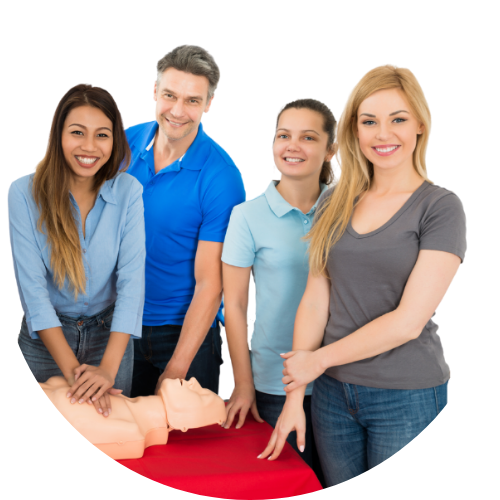What level of CPR do I need?
With only 3 levels of CPR taught by most companies,
it’s important to know the differences.
People often get confused when choosing the CPR Level of a First Aid course.
One of our goals is to ensure that everyone coming out to a course receives the training that they truly require.
When you phone or send us an email, we may ask what specifically are you taking this course for? Is if for work, school, volunteering? Once you tell us we can work with you to ensure that the course you take is the course you need.
Here is a little guide for you, to help make the choice easier.
We offer 3 different levels of CPR training at Barrie First Aid to ensure that we can meet the needs of our clients.
All levels of CPR are the same price, so our Instructors can help you in class and adjust your level as necessary to ensure you get what you need.
CPR-BLS- Basic Life Support - *RECOMMENDED*
We recommend this program as the best default choice.
There is NO extra cost at Barrie First Aid Training (other providers usually charge a premium)
It only takes a BIT of extra time to learn the additional theory & skills
It’s the HIGHEST level of CPR training for the average citizen who isn’t a doctor or paramedic or other type of medical professional.
Anyone can benefit from this CPR level, although it’s designed specifically for healthcare providers, and students who are in fields where they are working to become healthcare providers.
It includes everything from CPR-C. Additionally, you will learn how to properly use a bag valve mask (BVM) and how to do CPR on someone once they are intubated by a professional.
This level is required for all Paramedics, Doctors, Nurses, Dental Hygienists, Chiropractors, and anyone working in a medical office. This is also a requirement for any students who are in post secondary school to have completed before they start their clinical placements.
CPR-C
CPR Level C stands for adults, children and infants.
CPR-C covers everything in CPR-A. You will learn how to help an infant or child who is choking, or in cardiac arrest.
This level of CPR is our most commonly sought after level (although we still recommend getting certified in CPR BLS regardless) as CPR-C is a requirement for many positions.
Some of the careers that require this level are Teachers, Educational Assistants and anyone who works in a school, day camp employees, daycare providers, dance studio employees, and many volunteer organizations that work with children. The list of positions and jobs that require CPR-C is extensive and includes many outside of this list.
CPR-A
This course is the most basic CPR course. The A means you’re only certified to aid adults, NOT children or infants.
It is only for people who will not be working with children and are looking for a course that is specifically for managing emergencies with adults within their workplace (such as personal trainers).
This course will teach you how to assist an adult who is choking, but also to understand the dynamics of how and why someone chokes. We also cover cardiopulmonary resuscitation or more commonly CPR.
CPR is broken down into its individual components so that you can effectively give someone chest compressions and understand if they would benefit from rescue breathing. On top of this, we will teach you how to use an AED and why an AED is so important.
At Barrie First Aid and CPR Training we stand behind what we teach.
Our policy is that as long as your certificate is still valid you are welcome to come in and sit in on a course free of charge if you feel you would benefit from relearning some of the course.
We will also upgrade anyone from CPR-C to CPR-BLS free of charge during our courses.



